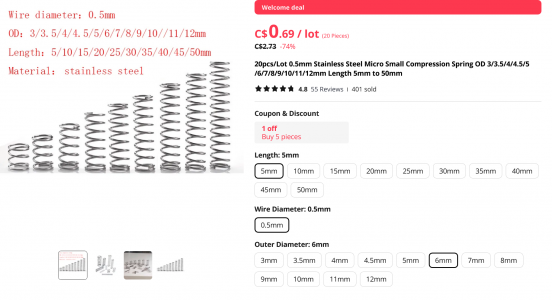Here it is, an attempt to reverse-engineer the Aerovironment Switchblade 300. Wingspan about 24 inches.
This version is the mule with which I plan to get sharp on controlling a tandem wing design. It will be built from combination of foamboard and 3D printed motor mount, leading and trailing edges, rudders, and elevons. The wings will not pivot on the mule but I have figured out how to do it in the final version whcih will be vacuum molded carbonfiber reinforced plastic - wings and fuselage. Foamboard now because I think I'm going to wreck a lot of them. I built a needle foamboard cutter adaptor for my 6040 Chinese CNC router which makes it possible to cut all the foamboard parts for one of these things in about 1 1/2 hours.
Elevons and Rudders are sprung, the Elevons so that they can be controlled by servo-powered vertical plunger actuators once they are deployed, and the Rudders which fold against the fuselage and then swing through 180 degrees where they are controlled via magnets by the push system shown in the detail. The geometry of the tail allows pushing one rudder out at a time with the other staying where it is. If you look at the geometry, you'll see that there will also be a pitch component combined with the rudder's effect on yaw. This will be an R/C plane but I doubt that it can be hand-flown without stabilization so it will have stabilization but will not be semi-autonomous -- yet.
The rendering and the drawing shows the springs I need. The one shown is for the rudders. A simpler version will be used at the wing-roots for the elevons. The shafts are 3MM carbon-fiber. As you can imagine, I couldn't buy anything exactly like this of course assuming that I would bend the dog-leg on one end myself. I was able to convert an expansion coil spring to work but it loads up by expanding radially rather than contracting the way the more usual torsion springs work.
Since all the springs will be the same diameter, wire size but possibly with different number of coils, it may make the most sense to make a dedicated spring winder for this project.
It doesn't look like the attached PDF cna be viewed but it can be downloaded.
I use OnShape for design and AutoCAD LT and SheetCAM to generate the G-Code for the foamboard parts. Anything requiring CNC on my Sherline 2000 is done with Creo (Pro Engineer) which unfortunately requires an expensive subscription, but I know it well from using it since 1988. So far, it appears that OnShape's CAM package is still on the horizon. OnShape is free if you don't mind having your files accessible to any other OnShape user. This project is for fun, so I don't care if anyone else gets into it.
John





